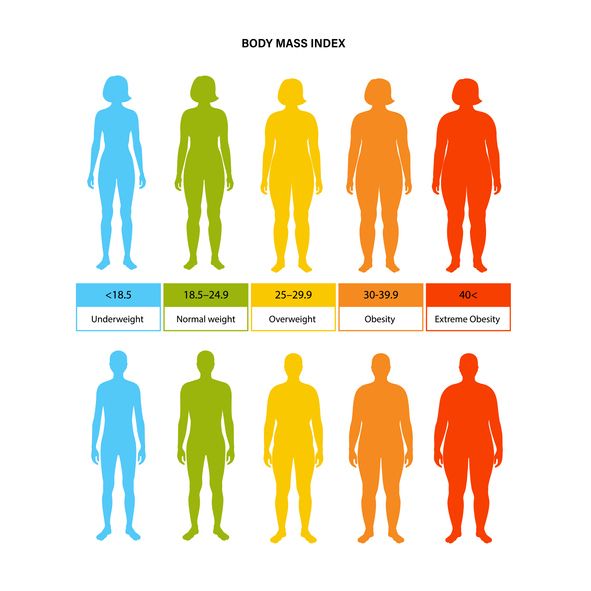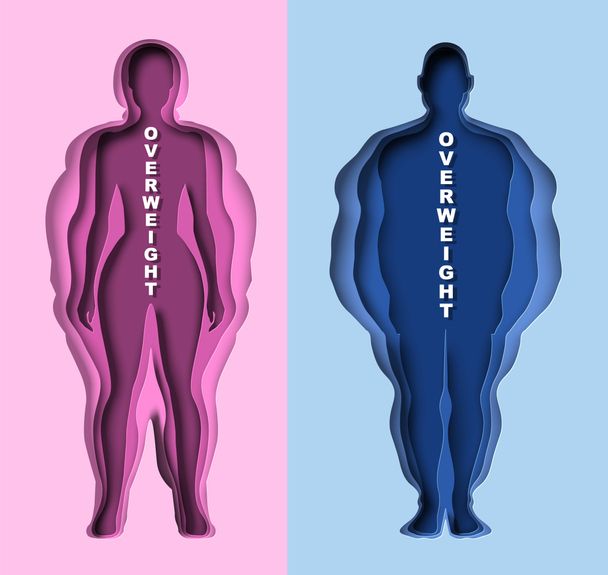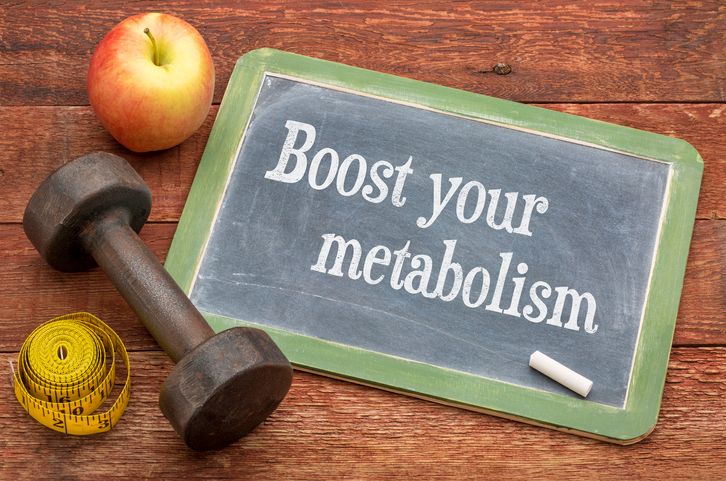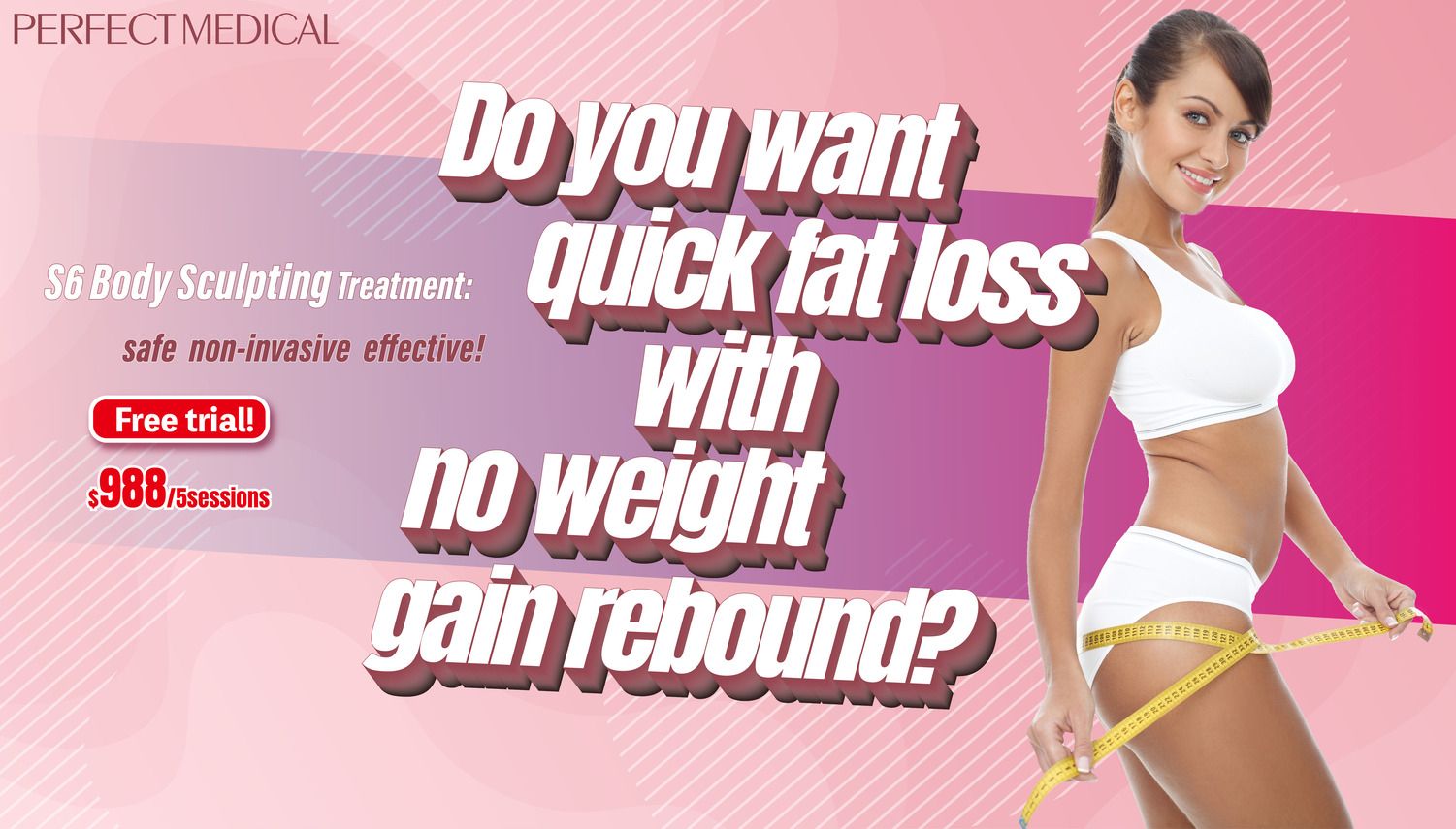- Home
- Trend
- Weight Loss Strategies
- Acne Tips
- Hair Health Information
- Blemish Removal Tips
- Acne Scar Removal Tips
- Muscle Building Techniques
- Intimate Care Tips
- Postpartum Intimate Care
- Eye Bags Wiki
- Tips for Face Slimming
- Secret of Permanent Hair Removal
- Breast Enlargement Tips
- Cure to Snoring
- Marionette Lines
- Skin-Tightening Secrets

免費體驗
S6 Body Sculpting Treatment
1 Minute Self-Registration
Date should not be before minimal date
Welcome to the ultimate guide on how to get rid of body fat. If you've been battling those stubborn excess pounds, you're not alone. Many people find it challenging to achieve their ideal body weight and maintain it. But fear not; this comprehensive article will provide you with valuable insights, tips, and strategies about metabolism and how to calculate body fat percentage to help you on your journey towards a healthier and leaner you.
1
Understanding The Whole Concept of Body Fat, Body Composition and Body Mass Index

Body fat is a crucial element in our bodies, serving as a stored energy source for times when we consume fewer calories than we need. However, when excessive, body fat can pose serious health risks, including conditions like obesity, diabetes, and heart disease. This underscores the importance of managing body fat levels to maintain good health. However, many were confused or do not know about what measurement is helpful in measuring body fat.
Body fat, body mass index (BMI), and body composition are related concepts, but they provide different insights into a person's health and physical condition. Here's how they are interrelated:
Body fat
Body fat refers to the total amount of fat in a person's body. It includes both essential fat (necessary for normal physiological functions) and non-essential fat (excess fat that can vary between individuals). It is typically expressed as a percentage of total body weight. For example, if a person weighs 68 kg and has 9 kg of body fat, their body fat percentage would be approximately 13%.
Body Mass Index (BMI)
BMI is a simple numerical measurement that relates a person's weight to their height and estimate body fat in exchange. It's calculated by dividing a person's weight in kilograms by the square of their height in metres (BMI = weight (kg) / height^2 (m^2)).
BMI is used to categorise individuals into weight categories such as underweight, normal weight, overweight, and obesity. However, BMI has limitations, as it does not directly measure body fat or account for factors like muscle mass, bone density, or fat distribution. Therefore, it may not provide a complete picture of an individual's health.
Body composition
Body composition is a more comprehensive assessment of the body's makeup, taking into account the proportion of different tissues, including muscle, bone, water, and fat. Unlike BMI, which provides a single numerical value, body composition analysis provides information on the distribution of weight between muscle and fat.
Common methods for assessing body composition include dual-energy X-ray absorptiometry (DXA), bioelectrical impedance analysis (BIA), skinfold thickness measurements, and underwater weighing.
Quick summary
Body fat is a component of body composition. When assessing body composition, one of the key parameters of interest is the percentage of body fat. BMI, on the other hand, is a separate measurement that uses weight and height to classify individuals into weight categories. While it indirectly relates to body fat, it doesn't provide a direct measurement of body fat percentage.
In general, individuals with a higher BMI are more likely to have a higher percentage of body fat, but there can be exceptions, especially among athletes or those with significant muscle mass. Each of these measures serves different purposes in assessing and understanding your health and physical condition. Before you decide what way you would like to lose your body fat, it is best to calculate your body fat percentage based on the measurement you have learned.
2
Are There Any Differences in Body Fat for Men and Women?

There are indeed differences in body fat composition and distribution between men and women, and these differences can influence how body fat is managed and how it's approached for reduction. Here are some key distinctions:
1. Overall body fat percentage
Women generally have a higher essential body fat percentage than men. Essential body fat is the amount of fat required for normal physiological function. In women, this is typically around 10-13% of total body weight, while in men, it's around 2-5%.
2. Fat distribution
Men tend to carry more of their body fat in the upper body, particularly in the abdominal area. This is often referred to as "android" or "apple-shaped" fat distribution.
Women, on the other hand, tend to store more fat in the lower body, hips, thighs, and buttocks, which is often referred to as "gynoid" or "pear-shaped" fat distribution.
3. Hormonal influence
Hormones play a significant role in body fat regulation. Oestrogen, the primary female sex hormone, tends to encourage fat storage in the lower body, which contributes to the typical female fat distribution. Testosterone, the primary male sex hormone, can encourage fat storage in the upper body.
Hormonal changes during menopause in women and ageing in men can affect fat distribution and metabolism.
4. Muscle mass
Men typically have greater muscle mass than women, which can result in a higher resting metabolic rate (the number of calories burned at rest). This can make it somewhat easier for men to burn calories and lose fat through exercise.
Women can also benefit from strength training to increase muscle mass, which can boost metabolism and aid in fat loss.
5. Weight loss approaches
While the basic principles of calorie balance (calories in vs. calories out) apply to both men and women for weight loss, the specific strategies and challenges may differ.
Men may find it relatively easier to lose abdominal fat, but it can be more challenging for them to shed fat in the lower body. Women may find it more challenging to lose fat in the hip and thigh area due to hormonal influences.
While the basic principles of weight management apply to both men and women, there are notable differences in body fat composition, distribution, and hormonal influences. These differences may lead to varying challenges and strategies when it comes to getting rid of body fat.
3
10 Effective Strategies for Fat Loss and Ideal Body Fat Percentage

No matter if you are male or female, metabolism still plays a significant role in body fat management because it determines how many calories you burn when at rest.
Generally, metabolism is the process by which our bodies convert food into energy. Having a higher metabolism means that your body naturally burns more calories, making it easier to achieve and maintain a healthy weight. This emphasises the importance of strategies that can boost your metabolism. You can achieve better metabolism and healthy body fat percentage with the ways below:
1. Balanced diet: Eat enough protein
Your diet plays a pivotal role in managing body fat. Try to do a balanced diet that includes lean protein, whole grains, fruits, and vegetables. Simultaneously, reduce your consumption of processed foods, sugary beverages, and high-fat snacks. A balanced diet provides essential nutrients while controlling calorie intake. Protein has a higher thermic effect of food (TEF) compared to carbohydrates or fats, meaning it requires more energy to digest. Including adequate protein in your diet can temporarily boost your metabolism and help preserve lean muscle mass while losing weight.
2. Adequate hydration
Yes. Just drink more water. Free and simple, but proper hydration is often overlooked in weight loss efforts. Drinking enough water helps control appetite, aids digestion, and supports various bodily functions. Aim to consume at least eight glasses of water per day to stay well-hydrated and support your weight loss goals.
3. Portion control
Portion control is a fundamental aspect of managing your calorie intake. It involves being mindful of how much food you consume during meals and snacks.
For example, instead of filling your plate to capacity, use smaller plates and bowls. This simple trick can create the illusion of a full plate while helping you control portion sizes. It's important to remember that even nutritious foods can contribute to weight gain if consumed excessively. By practising portion control, you ensure that you're consuming an appropriate number of calories for your body's needs, which is essential for fat loss and weight management.
4. Quality sleep
Quality sleep is often overlooked but is crucial for maintaining a healthy body weight. Lack of sleep can disrupt the balance of hunger hormones, such as ghrelin and leptin, leading to increased appetite and cravings, especially for high-calorie, sugary foods.
For instance, getting 7-9 hours of uninterrupted sleep each night allows your body to regulate these hormones properly, reducing the likelihood of overeating and weight gain. Prioritising quality sleep not only supports weight management but also promotes overall well-being, including cognitive function and mood.
5. High-Intensity Interval Training (HIIT)
HIIT workouts are an excellent option for those who enjoy exercise and want to maximise fat burning. These workouts involve short bursts of intense activity, like sprinting or jumping, followed by brief periods of rest or lower-intensity exercises. An example of HIIT could be a 20-minute workout consisting of 30-second sprints followed by 30 seconds of walking or jogging.
This exercise is effective at boosting metabolism, increasing calorie burn during and after exercise, and promoting the development of lean body mass, which can contribute to a more toned appearance.
6. Stay active throughout the day
For those who doesn't like to exercise (like me), all you need to do is stay active and don't keep yourself still for too long. Staying active throughout the day is essential, even if you don't engage in structured workouts. Prolonged periods of sitting can slow down your metabolism and negatively impact your overall health. Consider taking short breaks to stand up, stretch, or walk around, especially if you have a sedentary job. These breaks help keep your metabolism active and prevent stiffness or discomfort.
Simple activities like taking the stairs instead of the elevator or walking during your lunch break can add up and make a significant difference in your daily activity level.
7. Limit processed foods and sugars
Processed foods and excessive sugar intake can contribute to insulin resistance, a condition that affects how your body regulates blood sugar and can slow down metabolism.
Opt for whole, unprocessed foods like fruits, vegetables, lean proteins, whole grains, and nuts. These foods provide essential nutrients without the added sugars, unhealthy fats, and artificial additives often found in processed products.
8. Consider thermogenic foods
Some foods, known as thermogenic foods, contain compounds that can temporarily increase metabolism. While the effects are generally modest, they can contribute to overall metabolic health.
For example, green tea contains catechins that have been shown to boost metabolism and fat oxidation slightly. Spicy foods like hot peppers can temporarily increase calorie burn due to their capsaicin content. Incorporating these foods into your diet can provide a small metabolic boost over time, especially when combined with other healthy habits.
9. Consult a healthcare professional
If you're facing significant challenges with your metabolism or weight management, seeking guidance from a healthcare professional or registered dietitian is a wise choice.
These experts can evaluate your unique circumstances, medical history, and specific needs to provide personalised recommendations. They may also address underlying medical issues that could be affecting your metabolism and overall health.
10. Try out S6 Body Sculpting Treatment
If you are not really a fan of visiting doctors, Perfect Medical has just the right way to lower body fat percentage and give you the ideal body fat percentage. This therapy uses a low-energy bio-laser to target and eliminate subcutaneous fat in specific areas, avoiding invasive surgery.
The laser's heat breaks down fat cells, releasing fatty acids that aid lymphatic drainage. Vacuum suction massage during treatment boosts metabolism and stimulates collagen production, enhancing skin tightness, so it's great for both men and women who have a higher body fat percentage. For those who haven't achieved results through diet and exercise, S6 Body Sculpting Treatment is a promising alternative.
4
Before You Go

Getting rid of body fat is a journey that requires commitment and patience. By following a balanced diet, incorporating regular exercise, staying hydrated, and getting enough sleep, you can achieve your weight loss goals. Remember that it's essential to set realistic expectations and focus on overall health and well-being.

免費體驗
S6 Body Sculpting Treatment
1 Minute Self-Registration
Date should not be before minimal date
FAQ

1. How long does it take to see results when trying to get rid of body fat?
Results when attempting to reduce body fat can vary from person to person. Some initial changes in body composition may become noticeable within a few weeks of consistently following a healthy diet and exercise routine. However, achieving significant and sustainable results typically requires several months of persistent effort. Patience and consistency are crucial when pursuing long-term fat loss goals.
2. What is non-fat mass and fat mass?
Non-fat mass, also known as lean body mass, includes all the components of your body other than fat. This encompasses muscle, bones, organs, and water content. On the other hand, fat mass refers to the total amount of fat within your body. Understanding the balance between these two components is essential for assessing body composition and overall health.
3. Are fat-burning supplements effective?
While some dietary supplements claim to enhance fat loss, their effectiveness can be limited and may vary among individuals. It's important to approach these supplements with caution and scepticism. In most cases, the best and most sustainable approach to fat loss is to prioritise a balanced and healthy diet along with regular exercise. Consult with a healthcare professional before considering any supplement for weight management.
4. Is it possible to lose weight without exercising?
Yes, it is possible to lose weight without exercising by creating a calorie deficit through diet alone. Weight loss fundamentally comes down to consuming fewer calories than you expend. However, it's important to note that regular exercise offers numerous health benefits beyond weight loss, including improved cardiovascular health, increased muscle tone, and enhanced overall fitness. Exercise can also help accelerate the fat loss process and contribute to a more balanced and sustainable approach to weight management.
5. Should I follow a specific diet plan to get rid of body fat?
There are numerous diet plans available, each with its own approach to achieving fat loss. The key is to choose a diet plan that aligns with your personal preferences, lifestyle, and nutritional needs while promoting a calorie deficit for fat loss. What's most important is that your chosen diet plan is sustainable in the long term. Consulting with a registered dietitian or nutritionist can be beneficial, as they can provide personalised guidance and help you create a diet plan tailored to your goals and requirements.








